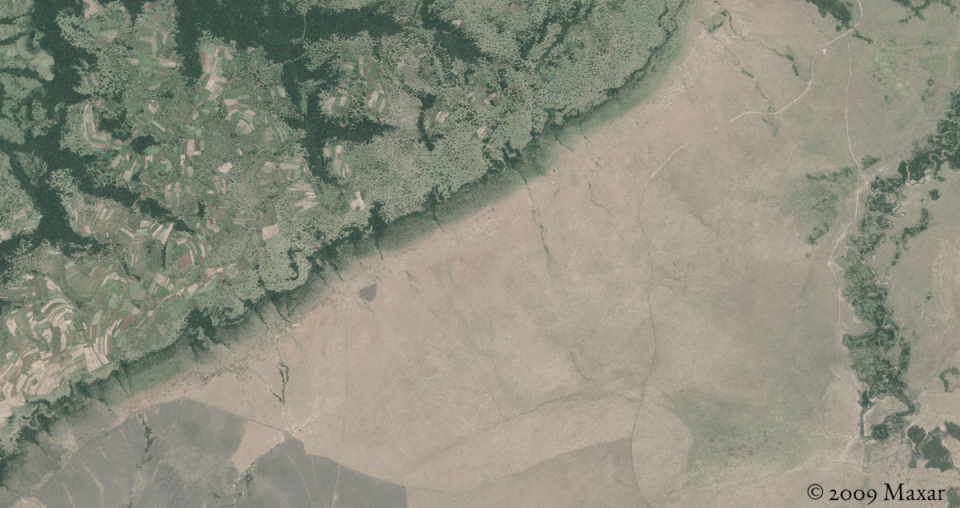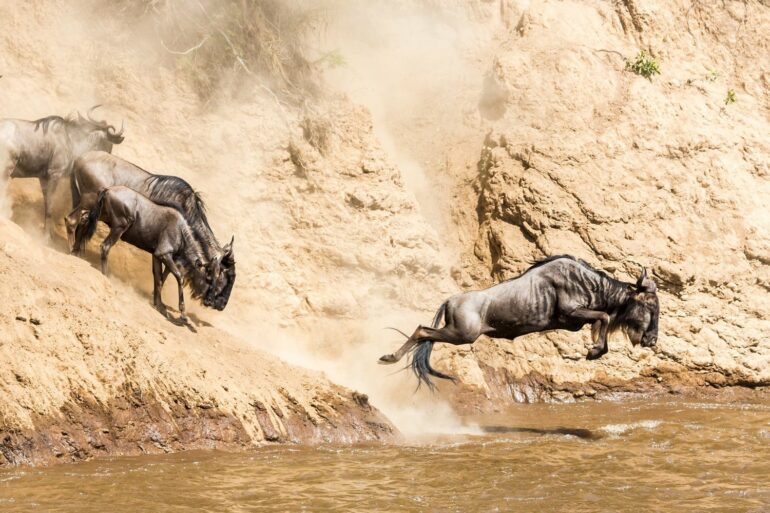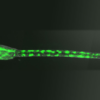In their research, associate professor from the NRS Department Tiejun Wang and his master’s student Zijing Wu developed an AI-model to automatically locate and count large herds of migratory ungulates (wildebeest and zebra). They used their method in the Serengeti-Mara ecosystem using fine-resolution (38–50 cm) satellite imagery.
They achieved accurate detection of nearly 500,000 individuals across thousands of square kilometers and multiple habitat types. The scientists at the Department of Natural Resources (ITC Faculty—University of Twente) recently published their results in the journal Nature Communications.
The Great Wildebeest Migration is the largest terrestrial mammal migration on our planet. It drives multiple ecological processes that support the health of humans and wildlife across the region. However, due to climate and land cover/use change, this natural process is becoming compromised. Developing accurate, cost-effective monitoring methods has quickly become a vital necessity to protect wildebeests and the ecosystem.
To address this issue, Tiejun Wang demonstrates, for the first time, the capability of satellite remote sensing and machine learning techniques to automatically and accurately count very large populations of wildebeest and zebras. Even across the highly heterogeneous landscape of their migration journey.

Approximately 120.000 individual wildebeests are accurately detected by the algorithm in this large area. Each purple dot is one wildebeest. © University of Twente
“We are currently in the first year of implementing the post-2020 global biodiversity framework, which the UN adopted at the 15th Conference of Parties to the UN Convention on Biological Diversity. The UN also recently established the Global Sustainability Development Goals as well as the first round of risk assessments on biodiversity and ecosystem services through the Intergovernmental Platform on Biodiversity and Ecosystem Services,” explains Wang.
“The unprecedented biodiversity loss as well as the gaps in knowledge on key aspects of biodiversity (e.g., species populations) clarify the need to integrate biodiversity measurements on Earth from the ground and from space. Hence, the effort to combine bottom-up and top-down approaches for biodiversity monitoring has never been so critical,” said Wang.
New satellite remote sensing and machine learning techniques make it possible to monitor global biodiversity with speed and precision. These efficiencies promise to reveal novel ecological insights at spatial scales which are germane to the management of populations and entire ecosystems. Wang’s research demonstrates, for the first time, the capability of satellite remote sensing and machine learning techniques to automatically and accurately count very large populations of terrestrial mammals across a highly heterogeneous landscape.
This study yielded highly accurate results and the largest training dataset ever published from a satellite-based wildlife survey (53,906 annotations). Beyond providing a truly open-source and transferable method for satellite-based wildlife surveys, the approach is spatially scalable for the first-ever total counts of migratory ungulates in open landscapes. Observing expansive herds of migratory ungulates from space presents an entirely novel perspective for the study of the ecology of animal aggregations.
More information:
Zijing Wu et al, Deep learning enables satellite-based monitoring of large populations of terrestrial mammals across heterogeneous landscape, Nature Communications (2023). DOI: 10.1038/s41467-023-38901-y
Provided by
University of Twente
Citation:
Using AI to push the boundaries of wildlife survey technologies (2023, June 2)



